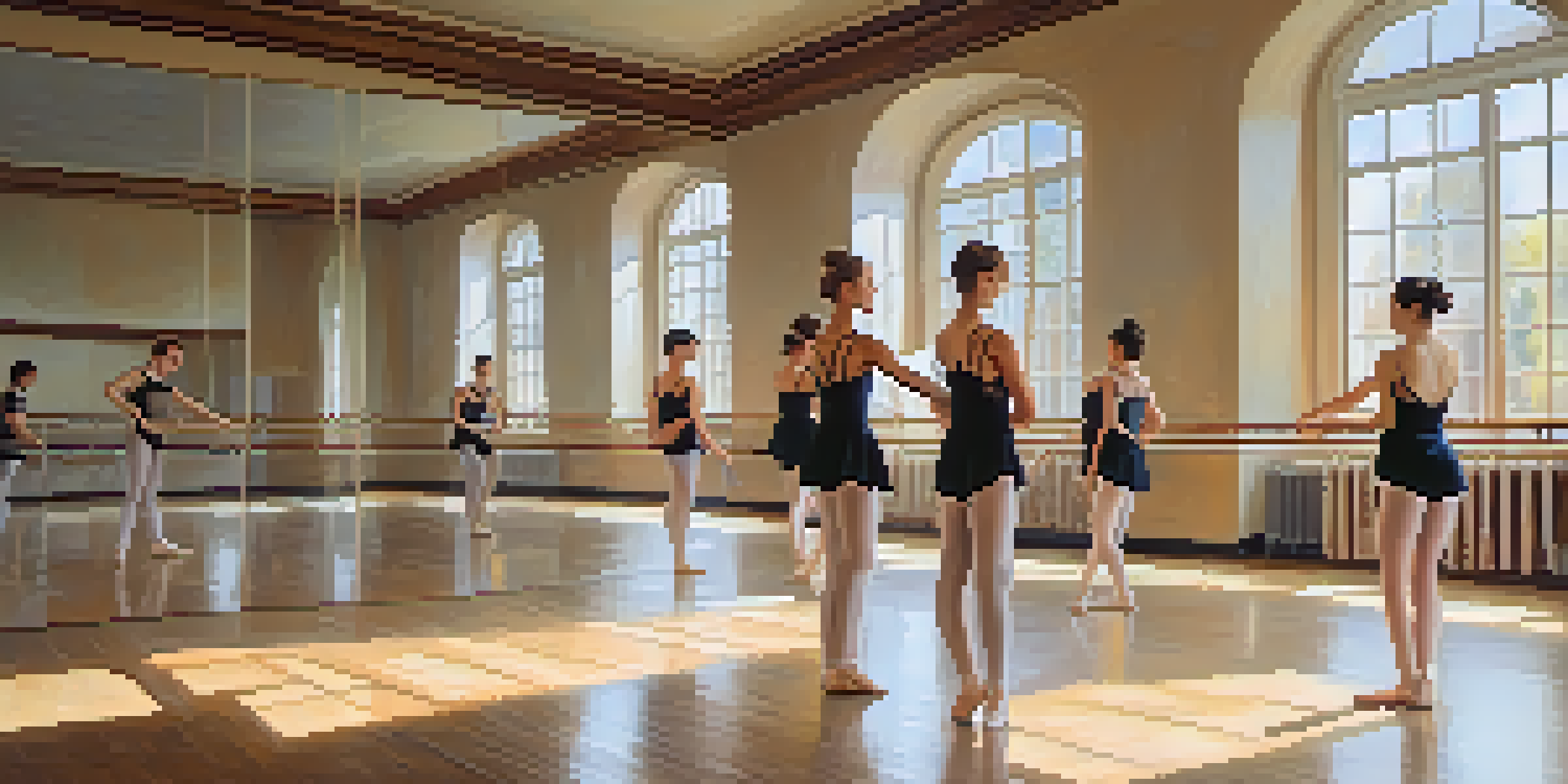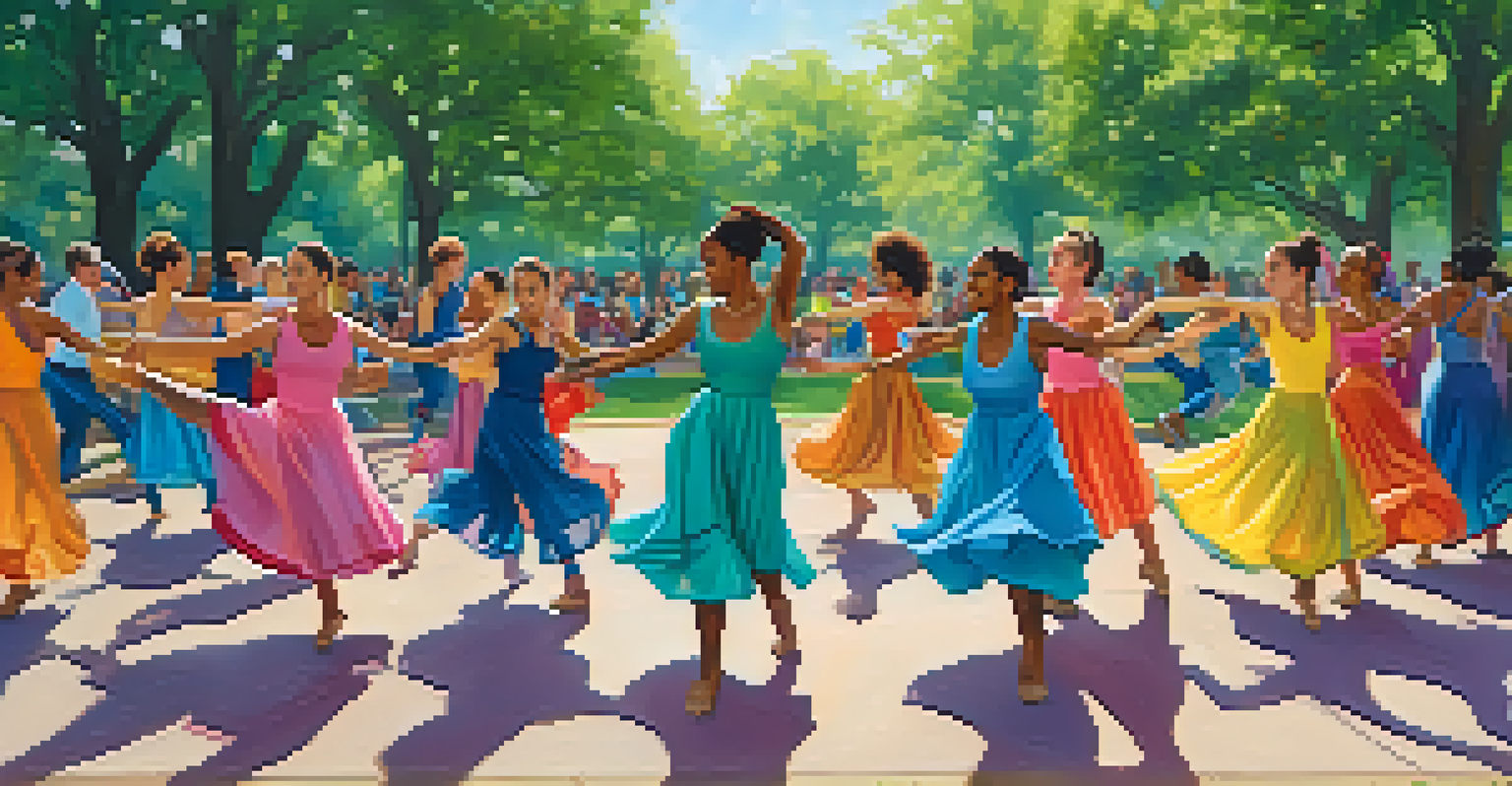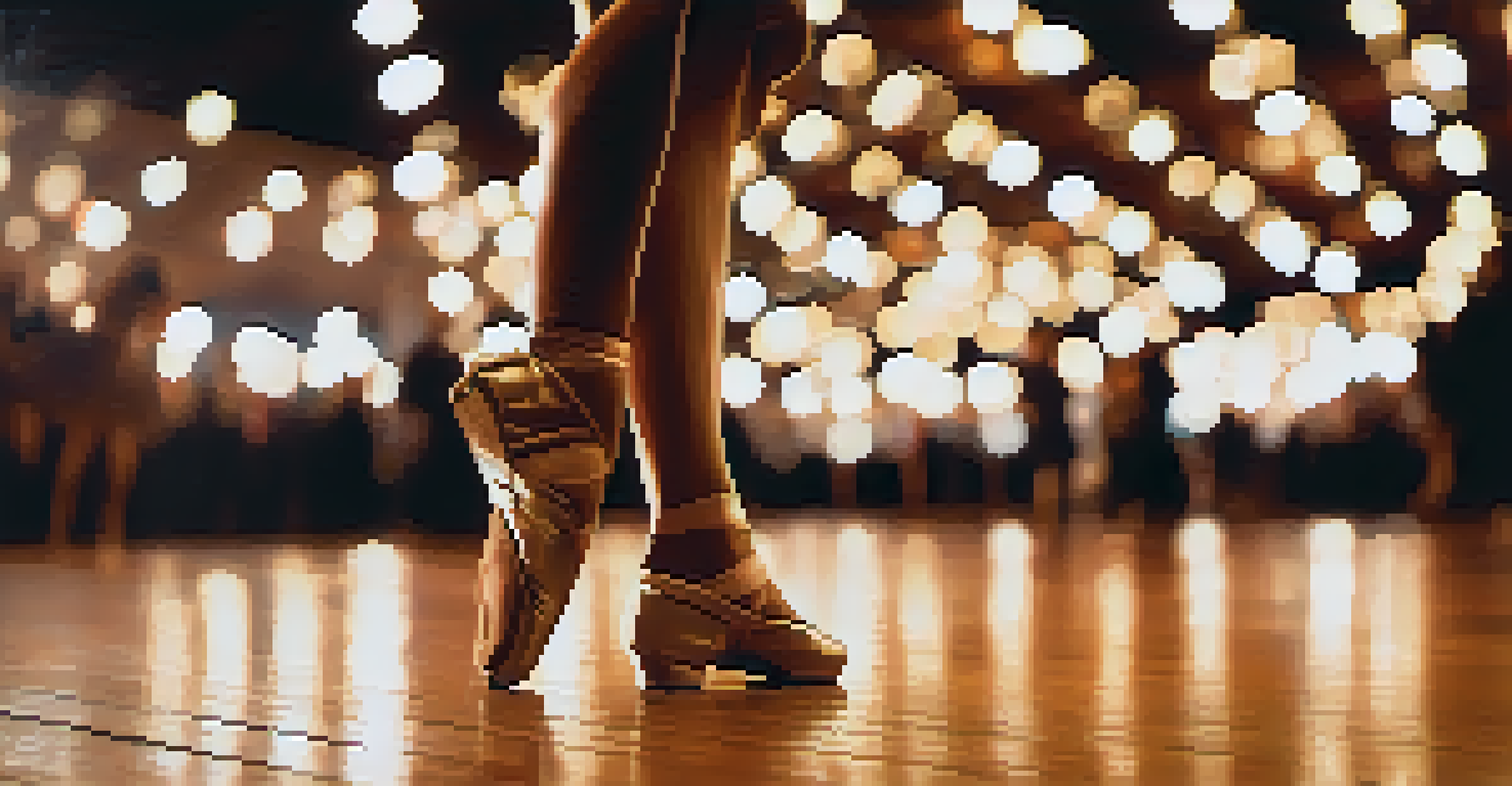Dance Pedagogy: Balancing Technique and Creativity

Understanding Dance Pedagogy: A Brief Overview
Dance pedagogy refers to the art and science of teaching dance. It encompasses various methods, styles, and philosophies that educators use to impart knowledge and skills to students. By understanding the principles of dance pedagogy, teachers can better facilitate a nurturing environment that fosters both technique and creativity.
Dance is the hidden language of the soul.
At its core, dance pedagogy balances the technical aspects of dance with the expressive elements. This balance is crucial, as it enables students to develop not only their physical abilities but also their unique artistic voices. A great dance educator recognizes that technique is the foundation upon which creativity flourishes.
Incorporating different pedagogical approaches allows for a more holistic teaching experience. For instance, combining classical methods with contemporary practices can inspire students to find their own style while mastering essential techniques. This blend is essential for cultivating well-rounded dancers.
The Importance of Technical Skills in Dance
Technical skills in dance are akin to the building blocks of a sound structure. Without a strong foundation in technique, dancers may struggle to perform complex movements or convey emotions effectively. Mastering techniques such as posture, alignment, and rhythm is essential for any dancer’s success.

Moreover, strong technical skills enhance a dancer's confidence and stage presence. When dancers are secure in their abilities, they are more likely to take risks and explore creative interpretations. This confidence opens the door to personal expression, allowing for a more authentic performance.
Balance Technical Skills and Creativity
Dance pedagogy thrives on balancing technical training with creative exploration to cultivate well-rounded dancers.
Teachers play a critical role in developing these technical skills. Through consistent practice and constructive feedback, educators can guide students to refine their techniques. This focus on skill-building lays the groundwork for creative exploration in dance.
Fostering Creativity Within Dance Education
Creativity in dance is vital as it allows individuals to express their emotions and ideas. Encouraging students to think outside the box can lead to innovative performances that resonate with audiences. This creative freedom is essential for the growth of each dancer's unique style and voice.
The body says what words cannot.
To foster creativity, dance educators can integrate improvisation exercises into their classes. These activities encourage students to explore movement without the constraints of technical rules, enabling them to discover new ways of expressing themselves. This playful approach can ignite inspiration and lead to fresh ideas.
Additionally, creating a safe and supportive environment is key to nurturing creativity. Students must feel comfortable taking risks and making mistakes, as these experiences often lead to breakthroughs in their artistry. A positive classroom atmosphere encourages experimentation and exploration.
Balancing Technique and Creativity in the Classroom
Striking a balance between technique and creativity is an ongoing challenge for dance educators. It's essential to provide structured technical training while also allowing room for creative expression. Finding this equilibrium ensures that students receive a comprehensive dance education.
One effective strategy is to incorporate themed classes that focus on both aspects. For instance, a class could begin with a technical warm-up and then transition into creative movement exploration related to a specific theme. This approach reinforces technical skills while simultaneously encouraging artistic expression.
Feedback Drives Growth in Dance
Constructive feedback is essential for dancers to improve their techniques while fostering their artistic expression.
Ultimately, the goal is to help students internalize techniques so they can use them as tools during creative processes. When dancers feel secure in their skills, they can freely explore their artistry without being bogged down by uncertainty.
The Role of Feedback in Dance Learning
Feedback in dance education plays a crucial role in a dancer's development. Constructive criticism helps students identify areas for improvement while recognizing their strengths. This process is vital for building technical proficiency and encouraging creative growth.
When giving feedback, educators should aim for a balance between technical guidance and encouragement of creative expression. For example, pointing out a dancer's strong technique while also suggesting ways to enhance their interpretive quality can motivate students to integrate both aspects into their practice.
Moreover, peer feedback can also be beneficial in the learning process. Encouraging students to share their insights with one another fosters a collaborative environment where everyone feels invested in each other's growth. This community of support nurtures both technical and artistic development.
Incorporating Technology in Dance Pedagogy
Technology is transforming the landscape of dance education, providing new tools for both teaching and creativity. Video recordings, for example, allow students to review their performances, identify technical flaws, and track their progress over time. This self-reflection can lead to improved technique and enhanced creative expression.
Additionally, online platforms and apps can facilitate collaboration among dancers, even from a distance. Dancers can share their choreography, receive feedback, and experiment with different styles in a virtual space. This access to a global community can inspire new ideas and broaden their artistic horizons.
Embrace Technology in Dance Education
Incorporating technology in dance pedagogy enhances learning and creativity, while still valuing personal connections in teaching.
However, it's essential to strike a balance between technology and traditional methods. While technology offers valuable resources, the human element of dance education—personal connections and live feedback—remains irreplaceable. Finding harmony between these two aspects can enhance the overall learning experience.
The Future of Dance Pedagogy: A Creative Approach
The future of dance pedagogy lies in the ability to adapt and embrace the evolving landscape of the art form. As dance continues to change, educators must remain open to new ideas and methodologies that blend technique with creativity. This adaptability will prepare dancers for the dynamic world of performance and choreography.
Moreover, fostering a culture of lifelong learning among educators is crucial. Continuing education, workshops, and collaboration with fellow instructors can inspire innovative teaching practices. By investing in their own growth, educators can better support their students in balancing technique and creativity.

Ultimately, the goal is to cultivate a generation of dancers who are not only technically proficient but also deeply connected to their artistic expression. By prioritizing this balance, dance pedagogy can evolve to meet the needs of future dancers while preserving the essence of the art form.